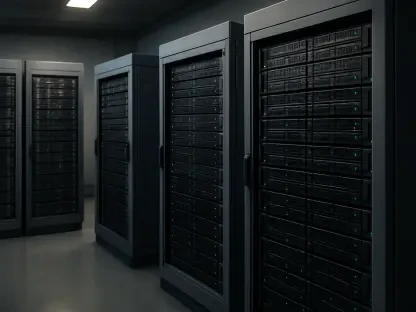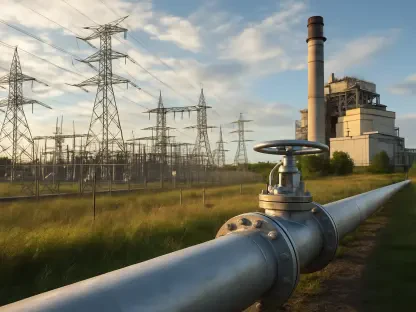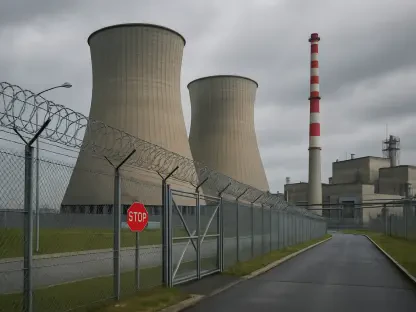I’m thrilled to sit down with Christopher Hailstone, a seasoned expert in energy management and renewable energy, who also serves as our Utilities expert. With his deep knowledge of electricity delivery, grid reliability, and security, Christopher offers invaluable perspectives on the evolving challenges and solutions in the electric industry. Today, we’ll dive into the pressing issues surrounding rapid load growth, the bottlenecks in interconnection processes, and the critical need to integrate transmission planning with interconnection to ensure a reliable and cost-effective grid for the future.
Can you start by shedding light on what’s driving the ‘generational change’ in the energy sector today?
Absolutely. We’re witnessing a profound shift in how energy is produced, consumed, and managed. This generational change is fueled by a surge in renewable energy adoption, the retirement of older fossil fuel plants, and an unprecedented rise in demand from technologies like electric vehicles and data centers. Unlike past trends where changes were more gradual and predictable, today’s transitions are rapid and complex, driven by both policy pushes for decarbonization and market demands for digital infrastructure. It’s a whole new landscape that requires us to rethink how we plan and operate the grid.
Why has load growth become such a central concern for the electric industry right now?
Load growth is a major issue because it’s happening at a pace and scale we haven’t seen before. Historically, demand increases were spread out geographically and tied to population or industrial growth. Now, we’re seeing concentrated spikes, especially from data centers supporting AI and cloud computing. These facilities require massive amounts of power in specific locations, and it’s incredibly tough to forecast exactly where or how quickly this demand will emerge. This unpredictability puts immense pressure on grid infrastructure and planning processes.
How does this rapid load growth challenge the reliability of the grid?
Rapid load growth strains the grid in several ways. When demand spikes in localized areas, it can overload existing infrastructure, leading to potential outages or reduced reliability for everyday customers. If we can’t connect new loads efficiently, we risk not only higher costs from emergency upgrades but also missed opportunities—like failing to power data centers that drive economic innovation. Uncoordinated connections can create ripple effects, destabilizing the system and making it harder to maintain a consistent power supply for everyone.
You’ve highlighted interconnection queues as a significant hurdle. Can you explain why these delays are so problematic?
Interconnection queues are essentially the waiting line for new power projects to connect to the grid, and they’ve become a massive bottleneck. Over the past couple of decades, the average wait time has ballooned from under two years to around five years. This delay stems from a combination of increased project applications, understaffed review processes, and the need for extensive grid studies to ensure stability. For developers, these long waits mean missed market opportunities, higher costs, and sometimes project cancellations, which slows down our ability to meet growing demand.
FERC has introduced reforms to tackle interconnection issues. How impactful have these changes been?
FERC has made strides with reforms like Order No. 2023 and Order No. 845, which aimed to streamline the interconnection process by setting stricter timelines, improving transparency, and prioritizing certain projects. While these steps are helpful, they haven’t fully resolved the backlog or addressed the deeper systemic issues. The rulemaking and compliance phases take time, and by the time reforms are implemented, the industry’s needs have often evolved. These reforms are necessary building blocks, but they’re not enough to keep pace with today’s challenges.
Why is there such a strong push to integrate transmission planning with interconnection processes?
The grid operates as a single, interconnected system, yet we often plan transmission expansion and generator interconnections separately. This disjointed approach leads to inefficiencies, like building infrastructure reactively rather than proactively, which drives up costs and causes delays. Integrating these processes would allow us to anticipate needs better, align new generation with transmission upgrades, and ultimately save money while speeding up connections. It’s about creating a more holistic strategy that benefits both developers and consumers.
How could an integrated planning process improve cost certainty for new energy projects?
Right now, developers often face huge, unexpected cost increases during the interconnection process—sometimes hundreds of millions of dollars—due to last-minute grid upgrade requirements. This uncertainty causes many projects to drop out, triggering restudies and further delays. An integrated planning process would provide clearer cost estimates upfront by aligning transmission buildouts with interconnection needs. This predictability helps developers make informed decisions, reduces project withdrawals, and keeps the queue moving more smoothly.
There seems to be a conflict between short-term fixes and long-term planning. Can you unpack that tension?
Certainly. The immediate pressure of load growth and reliability concerns pushes system planners to focus on quick fixes—like emergency upgrades or prioritizing near-term projects. While understandable, this short-sighted approach often neglects long-term planning, which is crucial for building a resilient grid. Without forward-thinking strategies, we risk higher costs from inefficient investments and miss out on opportunities to optimize the system for future needs. Balancing both timelines is tough but essential to avoid staying in perpetual crisis mode.
What role do you see Regional Transmission Organizations and Independent System Operators playing in addressing these planning challenges?
RTOs and ISOs are uniquely positioned to lead on this because they oversee large, interconnected regions of the grid, serving most of the country. A regional or interregional approach to integrating planning is far more effective than fragmented local efforts since it allows for better resource sharing, cost allocation, and coordination across diverse areas. They can drive innovation by adopting advanced technologies and designing processes that prioritize both efficiency and open access, ensuring the grid evolves to meet modern demands.
Looking ahead, what is your forecast for the future of grid planning and load growth management?
I believe we’re at a pivotal moment. If we can successfully integrate transmission and interconnection planning, and commit to regional collaboration, we’ll see a more resilient and adaptable grid over the next decade. Load growth, especially from data centers and electrification, will continue to challenge us, but with smarter planning and faster adoption of technologies like grid-enhancing tools, we can manage it effectively. The key is to stay proactive rather than reactive—building a system that not only meets today’s needs but anticipates tomorrow’s demands while keeping costs affordable for consumers.









